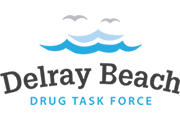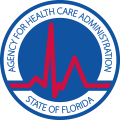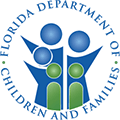Opioids include both natural opium from the poppy plant and synthetic versions of opium. This category of substance includes drugs such as heroin, morphine, oxycodone, hydrocodone, and codeine. Opioids are powerful analgesics, or painkillers. When used with a prescription, they can alleviate pain. When used recreationally, they can induce feelings of euphoria and wellbeing.
Understanding Opioid Addiction
Learn about opioid addiction
Opioids are so powerful because they bond to preexisting receptor sites in the brain. The brain naturally produces opioid-like chemicals called endorphins, and these endorphins have similar effects to opioids, including reduced pain, euphoria, and feelings of wellbeing. When opioid users abuse the drug, they flood their brains with many times the natural amount of endorphin-like chemicals, causing a powerful, pleasurable reaction. This pleasurable reaction can cause users to continuously return to the abuse of this substance as they seek out those same pleasurable feelings. The longer that this abuse occurs, the more susceptible they become to developing a dependence on the substance as their tolerance to its effects begins to increase. Once an addiction develops, people will begin to seek it out at all costs, causing serious harm to themselves and their loved ones.
Even when used with a prescription, there is a risk for developing an addiction to opioids. Although breaking an opioid addiction can be extremely difficult, there is help available.
Statistics
Opioid Abuse Statistics
Nearly 20 million Americans have used opioids at least once in their lives, while two million have done so in the last year. About one-fifth of those who use opioids choose heroin, and 650,000 of those have done so in the last year. Of those who use heroin, about one in four will become addicted.
Causes & Risks
Causes and Risk Factors for Opioid Abuse
As with any drug, the causes of addiction are complex, including both genetic vulnerability and environmental opportunity. Sometimes people with a genetic vulnerability to an opioid use disorder never develop one because they are never exposed to environments that encourage opioid use. The various causes and risk factors for opioid abuse are described below:
Genetic: People with family members who abuse opioids are more likely to abuse the drug themselves. One study cited by the National Institute on Drug Abuse (NIDA) randomly recruited families in which at least one member used opioids. In this study, the majority of families recruited, totaling 60 percent, included at least two people who used, suggesting a family link in opioid abuse. Genetic scans on these families revealed that family members who used opioids were likely to share certain genetic markers.
Environmental: One’s risk for developing an opioid use disorder is not purely genetic; environmental factors also can increase one’s risk. Children who grow up in homes with others who use opioids are more likely to become opioid users themselves, as are people who live in communities where opioids are frequently used. People exposed to chronic stress, such as violence, high unemployment, and poverty, are also more likely to become opioid users. Even people who are taking opioid painkillers with a prescription are sometimes at risk for developing an opioid addiction.
Risk Factors:
- Having an accident, injury, surgery, or other medical issue requiring a prescription for opioid painkillers
- Family history of mental illness or substance use disorder
- Personal history of mental illness or substance use disorder
- Traumatic experience
- Poverty
- Chronic stress, such an unemployment or low socioeconomic status
- Having friends, family members, or colleagues who frequently use opioids
- Difficulty managing stress
Signs & Symptoms
Signs and Symptoms of Opioid Abuse
In the early stages of an opioid use disorder, people are often able to conceal their abuse of the substance. Eventually, however, certain signs and symptoms of abuse begin to manifest in their lives. While the exact signs of abuse depend on which particular opioid a person is using, some common signs of opioid abuse are listed below:
Behavioral symptoms:
- Lying about pain to receive prescriptions for opioids
- Making appointments for multiple different doctors to receive multiple prescriptions for opioids
- Poor performance in work
- Unexplained periods of absence
- Isolating oneself from friends or family members
- Stealing medications from others
Physical symptoms:
- Noticeable changes in personal appearance, such as weight loss or changes in hygiene
- Scabs, sores, or puncture wounds suggestive of IV drug use
- Poor motor skills and coordination
- Digestive problems, such as vomiting or diarrhea
- Nausea
- Pupil constriction
Cognitive symptoms:
- Slowed thinking
- Impaired judgment and problem-solving
- Feeling detached from one’s surroundings
- Difficulty concentrating
Psychosocial symptoms:
- Emotional swings
- Sudden, unprovoked outbursts
- Irritability
- Depression
- Paranoia
Effects
Effects of Opioid Abuse
Opioids are powerful drugs, and abuse and subsequent dependence can have significant negative effects on those who struggle with addiction. If left untreated, opioid use disorders can have the following effects:
- Poor performance at work
- Job loss
- Strained or broken relationships with friends and family members
- Social isolation
- Financial problems
- Homelessness
- Physical ailments, including breathing problems, collapsed veins, cardiovascular problems, and sexual dysfunction
- Infection, such as HIV, from sharing needles
- Overdose and death
Co-Occurring Disorders
Opioid Abuse & Co-Occurring Disorders
People who develop opioid use disorders often struggle with other mental health problems, including:
- Anxiety disorders
- Depressive disorders
- Posttraumatic stress disorder
- Bipolar disorder
- Attention-deficit/hyperactivity disorder
- Personality disorders
Withdrawal
Effects of Opioid Withdrawal & Overdose
Effects of opioid withdrawal: When a person ceases using opioids after developing a dependence, his or her body needs to readjust to functioning without the drug. This process is called withdrawal. While opioid withdrawal is generally not life-threating, the symptoms can be extremely unpleasant. They include:
- Agitation
- Anxiety
- Nausea and vomiting
- Diarrhea
- Yawning
- Watery eyes
- Runny nose
- Loss of appetite
- Muscle spasms
- Cravings for opioids
Effects of opioid overdose: Over time, a person’s body becomes less receptive to opioids, requiring the person to use more and more of the drug to achieve a high. Sometimes in pursuit of a high, a person can take more of the drug than his or her body can handle and will end up overdosing. Overdoses can be fatal, so if you or someone you know is experiencing the following symptoms and has been using opioids, call for medical attention immediately:
- Constricted pupils
- Trouble breathing or shallow, slow respiration
- Reduced heartbeat
- Bluish tint to lips and fingernails
- Loss of color
- Delayed responses to stimuli
- Muscle spasms
- Seizure
- Loss of consciousness
- Coma












